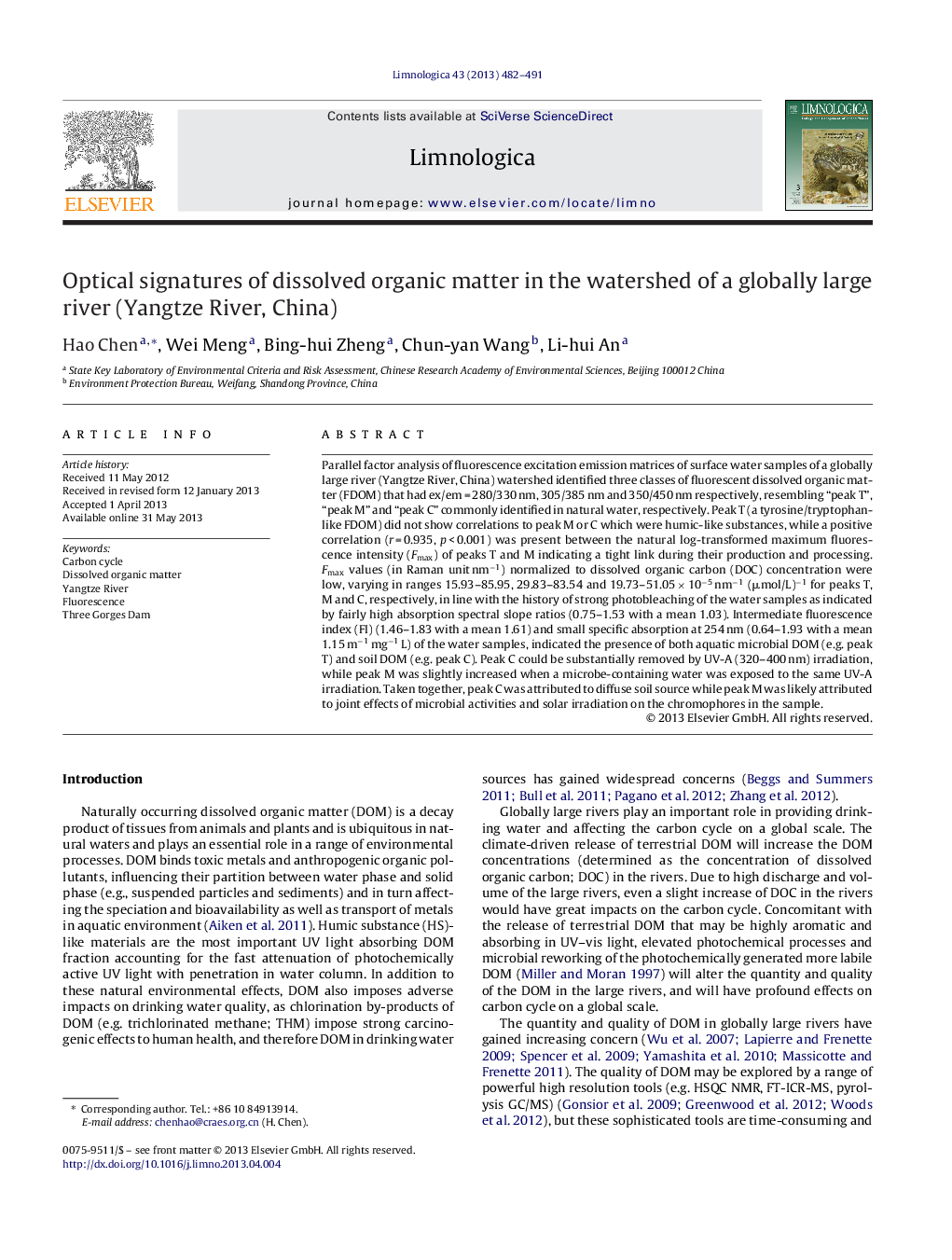| Article ID | Journal | Published Year | Pages | File Type |
|---|---|---|---|---|
| 4400417 | Limnologica - Ecology and Management of Inland Waters | 2013 | 10 Pages |
Parallel factor analysis of fluorescence excitation emission matrices of surface water samples of a globally large river (Yangtze River, China) watershed identified three classes of fluorescent dissolved organic matter (FDOM) that had ex/em = 280/330 nm, 305/385 nm and 350/450 nm respectively, resembling “peak T”, “peak M” and “peak C” commonly identified in natural water, respectively. Peak T (a tyrosine/tryptophan-like FDOM) did not show correlations to peak M or C which were humic-like substances, while a positive correlation (r = 0.935, p < 0.001) was present between the natural log-transformed maximum fluorescence intensity (Fmax) of peaks T and M indicating a tight link during their production and processing. Fmax values (in Raman unit nm−1) normalized to dissolved organic carbon (DOC) concentration were low, varying in ranges 15.93–85.95, 29.83–83.54 and 19.73–51.05 × 10−5 nm−1 (μmol/L)−1 for peaks T, M and C, respectively, in line with the history of strong photobleaching of the water samples as indicated by fairly high absorption spectral slope ratios (0.75–1.53 with a mean 1.03). Intermediate fluorescence index (FI) (1.46–1.83 with a mean 1.61) and small specific absorption at 254 nm (0.64–1.93 with a mean 1.15 m−1 mg−1 L) of the water samples, indicated the presence of both aquatic microbial DOM (e.g. peak T) and soil DOM (e.g. peak C). Peak C could be substantially removed by UV-A (320–400 nm) irradiation, while peak M was slightly increased when a microbe-containing water was exposed to the same UV-A irradiation. Taken together, peak C was attributed to diffuse soil source while peak M was likely attributed to joint effects of microbial activities and solar irradiation on the chromophores in the sample.
